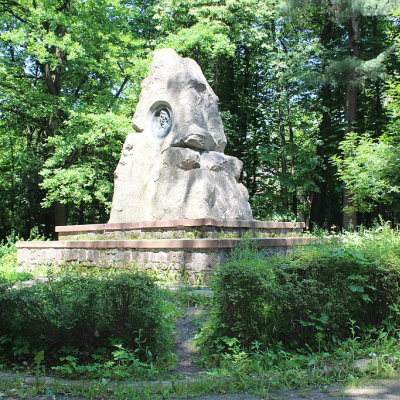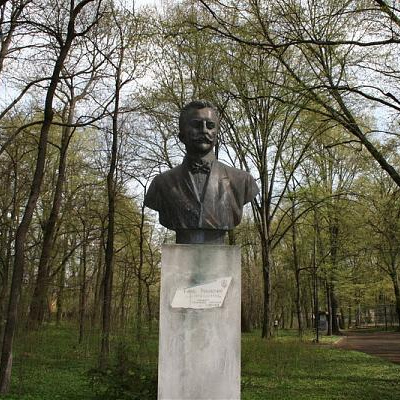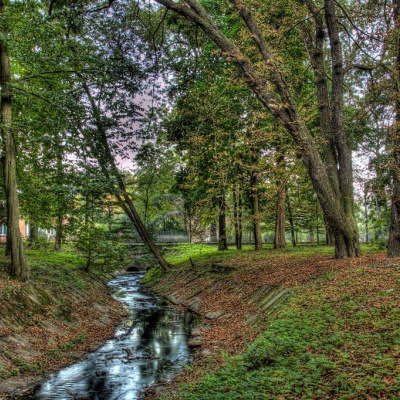City Park of Culture and Recreation named after Kyrylo Tryliovskyi, Kolomyia
The Park (Kyrylo Trillivskyi Park) is a park-monument of landscape art of local importance in Ukraine. It is located within the city of Kolomyia, Ivano-Frankivsk region. The area is 7 hectares, the status was granted in 1972. It is under the jurisdiction of the Kolomyia City Council. The history of the creation and development of the monument of landscape art, the planning structure and the current state of the plantations are studied. Based on the collected data, methods of optimizing the park landscape are proposed: reconstruction of the path and trail network, plantings, restoration and conservation of its individual elements.
Trilliovskyi Park is the oldest park in Kolomyia. It was started in the 19th century at the expense of the city magistrate. The oldest tree in the park is a two-lobed gingo, native to Japan, which is over a hundred years old. The park also has oaks, silver maples, gray walnut, magnolia, robinia, and Amur velvet. Today, the park is included in the State Register of Monuments of Landscape Art. In the park area there is a monument to the Polish poet Adam Mickiewicz, as well as to the famous doctor of law, Kyrylo Trilliovskyi, who was born in the early 20th century. This monument was erected in 1997. There are also modern monuments in the park. In 2016, an original sculpture of Button Cat was unveiled. This unusual sculpture became the hundredth cat monument in the world. The author of the sculpture, Oleh Loburak, plans to create 6 more cat sculptures to be placed in the same park.
There are 3 main parks and several recreation areas. The oldest is the city park of culture and recreation named after Kyrylo Tryliovskyi (Lesi Ukrainky boulevard), founded by the magistrate in the first half of the nineteenth century. The original foundation of the park (10 hectares) was created by swamps and mixed oak and beech forests, which were cleared. The main plantings of the park consisted of maples, oaks, beeches, hornbeams, birches, fir trees, pines, and junipers. As a result of the park's reconstruction, introduced tree and shrub species were planted (5 hectares). Today, the park is home to silver maples, felt linden, Amur velvet, red oak, common mountain ash, beech, fir, pine, hornbeam, chestnut, gray walnut, magnolia, and two-lobed ginkgo (over 100 years old). The park has children's attractions, a summer cinema, a summer stage, a dance floor, a small stadium with tennis courts, volleyball and basketball courts. The park is listed in the State Register as a monument of landscape art, and a monument to K. Trilliovskyi has been erected.
It is a real landscape complex for recreation of citizens and exemplary gardening. In the 1870s, a city park was laid out on Zelena Street (now Lesi Ukrainky Boulevard), probably the present-day K. Trilliovskyi Park. According to other sources, this park was laid out in the first half of the nineteenth century. Gradually, more than 100 species of trees and shrubs were brought here from different regions. The green spaces were arranged in such a way that, on the one hand, their decorativeness and unusualness were clearly visible against the background of the Carpathian landscapes, and on the other hand, to reveal the richness of the palette of landscape art as widely as possible with the help of different variants of the same plant species, which differ in shape or color. The city park was popular among the townspeople and guests of Kolomyia. On September 16, 1880, an ethnographic exhibition was held here, which was attended by Emperor Franz Joseph I and Archduke Ratner. The city park also became a place of public demonstrations and meetings. On May 30, 1893, a radical assembly was held in the park, which brought together more than 500 peasants from Kolomyia
and neighboring counties. Newspapers reported that this assembly had a great influence on the awakening of the peasants' consciousness. In July of the same year, an organizational veche of the radical political society Narodna Volia was held here, attended by more than 300 peasants and a small number of intellectuals. Ivan Franko delivered a speech at the meeting. On three occasions, June 6, 1902, June 28, 1903, and July 12, 1906, the well-known politician K. Trylielski officially held grandiose "Sich holidays" in Kolomyia, during which several thousand columns with music, colorful Ukrainian costumes, emblems and flags, and Sich songs marched through the city park to the Prut riverbank for their competitions.
Another city park, Studentskyi, was laid out near the riverbank, on the Prut, in 1897. It was initiated by the director of the Polish state men's gymnasium Skupniewicz.
The park was laid out at the expense of the local magistrate in the second half of the nineteenth century, on the site of a natural mixed forest. At the same time, an artificial channel of the Radylivka stream, which had previously been moving in a different direction, was laid through the park. In 1898, the park was named after A. Mickiewicz, whose monument with an elliptical brass relief on the background of a granite block was erected in the central part. In 2005, the monument was restored at the expense of the Polish community. In September 1880, in honor of the arrival of Emperor Franz Joseph in Kolomyia, a wooden ethnographic pavilion was built in the park (designed by engineer W. Shatra), which later hosted various events: sports competitions, calls for a strike, and on June 16, 1902, the first Sich holiday in the area was held, led by the doctor of law Kyrylo Tryliovskyi, who won the elections to the Austrian parliament in May 1907. At that time, the park was visited by Les Martovych, Mykhailo Kotsiubynskyi, and Vasyl Stefanyk.
In the post-revolutionary years, Fedir Bileychuk (1905-1953), who was the chief gardener here until 1939, made a lot of efforts to shape the park landscapes. According to archival materials, he was a master at creating patterns from flowering plants and skillfully performed figured trimming of trees and bushes. Not far from the gardener's house there was a greenhouse and a greenhouse with planting material. Today these buildings are destroyed and overgrown with thickets. From 1939 to 1941, the park was taken care of by Ivan Kostiuk, a former Sich Rifleman, UGA soldier, and public activist. Thanks to him, thousands of saplings were planted in the city, and a laboratory for plant acclimatization was founded.
Under the master's guidance, the "Flower Festival" was held in the park every autumn, where employees of housing offices, schools, and forestries exhibited their compositions. After the war, the park was named in honor of S. Kirov, the secretary of the Leningrad regional committee of the CPSU (b), and in 1956 a monument to him was erected, the pedestal of which was made of red granite from the old Kolomyia cemeteries. In 1952, the Komsomolets cinema was built in the park, characterized by a light Hutsul style. The authors of the project were the city's chief architect I. Bodnaruk and master woodworker A. Shaerman. Nearby, in the pavilion where the emperor was received, a seasonal restaurant "Karpaty" was set up and carousels were installed.
In the mid-1980s, the park underwent a reconstruction that resulted in a concert venue with an amphitheater, the banks of the stream were covered with rectangular reinforced concrete slabs, and a real fighter plane was installed, which was dismantled for scrap after the collapse of the USSR. Already in the days of independent Ukraine, on October 19, 1997, a bronze bust of the founder of the Sich movement in Ukraine, K. Trilliovskyi (sculptor V. Odrekhivskyi), was unveiled and consecrated near the entrance to the park from L. Ukrainka Street.
At present, the park's territory looks like a broken quadrangle and is bounded by L. Ukrainka, O. Kobylyanska, and A. Tchaikovsky streets. As it is the central part of the city, it is visited by many people, especially children with their parents. There are two private catering establishments on the territory, which also attract many visitors.
In 2011, the staff of the Department of Landscape Architecture, Gardening and Urban Ecology at the National Forestry University of Ukraine made an inventory of the park's plantations and developed a project for the reconstruction of the plantations. According to the inventory, which includes 1264 trees, the species structure of the park is formed by 58 species of trees and shrubs. The range of identified plants is presented in the table.
The following woody plants are the most represented (%): common chestnut (10.7), common hornbeam (12.9), sharp-leaved maple (12.1), small-leaved linden (10.2), common robinia (10.0), common ash (12.0).
(12,1). These species account for 68% of the total number of trees. Since the park is an old one, there are many long-lived trees among its plantations. The largest diameters are: common ash (127, 121, 105, 101 cm), linden
large-leaved linden (124 cm), silver maple (116 cm), and common bitter chestnut (108 cm). About ten trees are 90-100 cm in diameter. All of them have impressive crown sizes and heights.
The park still has the ruins of a cinema, a gardener's house, a greenhouse, and attractions that are not functioning today and are therefore subject to dismantling. It is worth paying attention to the current state of park plantings. In some parts of the park, the tree canopy is so thick that there are no shrub and grass tiers under it. The park has formed a rather extensive network of natural paths, which are used by many people. This leads to trampling of the grass cover, soil compaction, and deterioration of the sanitary condition of the trees. As for the latter, the most common types of damage identified during the inventory are chestnut moth, powdery mildew of oak, dry branches on light-loving species (common robinia, pine) caused by insufficient lighting and mechanical damage.
The park's reconstruction project envisages the improvement of the path network in accordance with modern needs, replacement of the paths' surface, installation of new benches and lanterns in place of the broken and destroyed ones, and installation of playground equipment. Particular attention is paid to the reconstruction of the plantations, which includes the removal of dry and dangerous trees, overgrowth of low-value vegetation, enrichment of the species structure, and the arrangement of flower beds that are currently absent.
Taking into account the historical significance of K. Trilliovskyi Park, the project proposes measures aimed at adapting the facility to new operating conditions in the system of greening the settlement, forming sustainable, durable and highly decorative plantings and preserving a valuable monument of landscape art for long-term use in the future.
Accommodation around City Park of Culture and Recreation named after Kyrylo Tryliovskyi, Kolomyia:
Які маршрути проходять повз City Park of Culture and Recreation named after Kyrylo Tryliovskyi, Kolomyia?
Пропонуємо пройти такі туристичні (пішохідні) маршрути через/біля City Park of Culture and Recreation named after Kyrylo Tryliovskyi, Kolomyia: Шешори - Росохата, Дорога опришків, с. Космач, через г. Ротило, г. Грегіт, г. Біла Кобила до с.Буковець, пер. Німчич - Протяте Каміння, с. Микуличин, через г. Хорде, г. Ротило до с. Космач, ур. Медвежий - г. Куратул
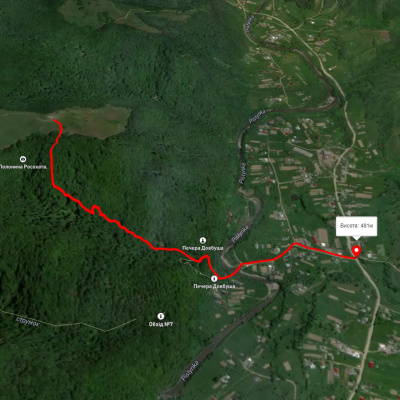
Шешори - Росохата
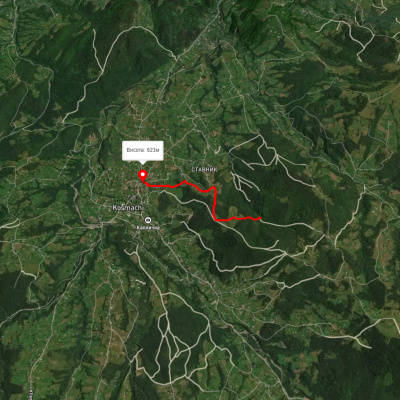
Дорога опришків
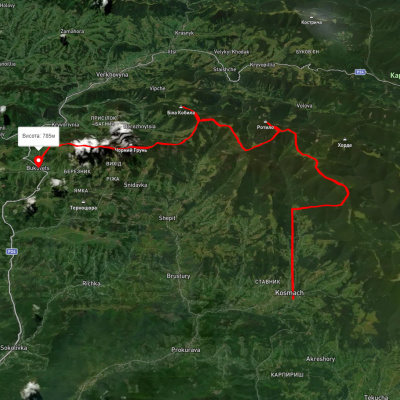
с. Космач, через г. Ротило, г. Грегіт, г. Біла Кобила до с.Буковець
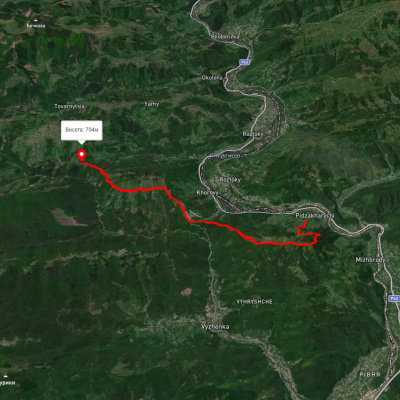
пер. Німчич - Протяте Каміння

